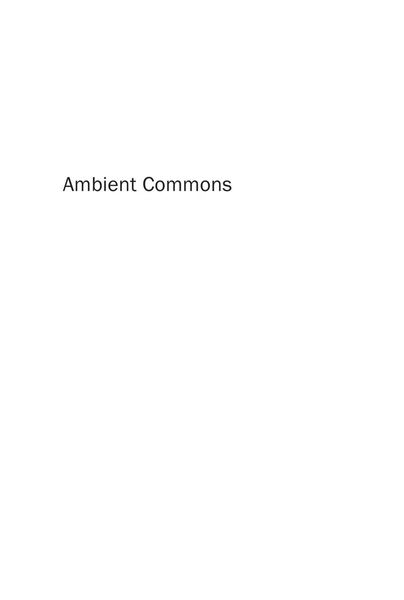
Ambient Commons Attention in the Age of Embodied Information
The world is filling with ever more kinds of media, in ever more contexts andformats. Glowing rectangles have become part of the scene; screens, large and small, appeareverywhere. Physical locations are increasingly tagged and digitally augmented. Sensors, processors,and memory are not found only in chic smart phones but also built into everyday objects. Amid thisflood, your attention practices matter more than ever. You might not be able to tune this world out.So it is worth remembering that underneath all these augmentations and data flows, fixed formspersist, and that to notice them can improve other sensibilities. In AmbientCommons, Malcolm McCullough explores the workings of attention though a rediscovery ofsurroundings. Not all that informs has been written and sent; not all attention involves deliberatethought. The intrinsic structure of space -- the layout of a studio, for example, or a plaza --becomes part of any mental engagement with it. McCullough describes what he calls the Ambient: anincreasing tendency to perceive information superabundance whole, where individual signals matterless and at least some mediation assumes inhabitable form. He explores how the fixed forms ofarchitecture and the city play a cognitive role in the flow of ambient information. As apersistently inhabited world, can the Ambient be understood as a shared cultural resource, to besocially curated, voluntarily limited, and self-governed as if a commons? AmbientCommons invites you to look past current obsessions with smart phones to rethink attentionitself, to care for more situated, often inescapable forms of information.
Reviews
Cal Desmond‐Pearson@social-hermit
Christian Beck@cmbeck